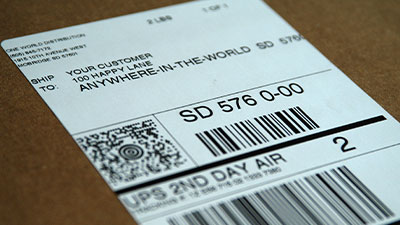In This Article:
Multi-channel distribution is essential for any D2C ecommerce business. This means using different ways to sell products, like online marketplaces, physical stores, and direct-to-consumer (D2C) platforms. Multi-channel distribution is important because it helps make your brand more visible, brings in money from different sources, and gives customers more ways to interact with your business.
Multichannel businesses see an average revenue increase of 38% when they add a new sales channel and 190% when they add three. Leveraging multi-channel distribution is your ticket to ecommerce success.
In this guide, discover the most effective multi-channel distribution strategies for 2025. We’ll explain how to use these strategies well and talk about all the ways they can help your business. From reaching more people to making more sales, a good multi-channel approach can transform your ecommerce business.
What is Multi-Channel Distribution System?
A multi-channel distribution system refers to the strategy of utilizing multiple avenues or channels to distribute products and reach customers. This approach integrates various sales channels, such as:
- Brick-and-mortar stores
- Online marketplaces
- Direct-to-consumer (D2C) websites
- Social media platforms
- Third-party retailers
Businesses can significantly benefit by leveraging these multiple sales channels in several ways.
- Expanded Reach: Access to a wider audience by tapping into different customer bases across various platforms.
- Increased Brand Visibility: Enhanced brand presence through consistent exposure on multiple fronts, boosting recognition and recall. Different user groups are active on different channels, so expanding your reach is essential for maximum conversions.
- Diversified Revenue Streams: Mitigating risks and ensuring steady income by not relying solely on a single sales channel.
The Role of Market Analysis, Customer Segmentation, and Channel Strategy Development in Multi-Channel Distribution
1. Market Analysis for Identifying Viable Channels
Conducting a comprehensive market analysis is crucial for identifying the most suitable channels to reach your target audience. A thorough market analysis involves:
- Assessing Market Trends: Understanding current market trends gives insights into which channels are gaining traction and which ones might be fading. Key performance indicators (KPIs) like customer acquisition costs and conversion rates can highlight high-performing channels.
- Competitive Analysis: Evaluating your competitors’ channel strategies helps identify gaps and opportunities. Analyze where they are succeeding and where they might be falling short. This can help you decide which channels to allocate more marketing spend to.
- Customer Demographics and Preferences: Collect data on your existing customers’ demographics, preferences, and purchasing behaviors. Tools like Google Analytics, social media insights, and customer surveys can provide valuable data and guide your ecommerce personalization efforts.
Integrating these elements ensures that your multi-channel distribution strategy is both data-driven and aligned with market demand.
2. Understanding Customer Behavior Across Channels through Segmentation
Customer segmentation plays a vital role in understanding preferences and behaviors across different channels. By dividing your customer base into distinct segments, you can tailor your approach to meet their specific needs.
- Behavioral Segmentation: Group customers based on their interactions with various channels—online stores, social media platforms, physical retail locations. This helps in identifying which segments prefer which channels for shopping or engagement.
- Geographic Segmentation: Regional preferences often dictate channel effectiveness. For example, certain regions may favor online shopping over brick-and-mortar stores due to accessibility or convenience factors.
- Psychographic Segmentation: Understand customers’ lifestyles, values, and interests to predict which channels they are more likely to use. For instance, tech-savvy consumers may prefer mobile apps or e-commerce platforms.
Utilizing advanced analytics tools allows for dynamic segmentation that adjusts as customer behaviors evolve over time.
3. Developing a Coordinated Channel Strategy
Developing a cohesive and integrated channel strategy ensures a seamless customer experience across all touchpoints:
- Unified Branding: Maintain consistent branding across all channels to build trust and recognition among customers. Consistency in messaging, design elements, and tone reinforces brand identity.
- Cross-Channel Promotions: Implement promotional strategies that leverage multiple channels simultaneously. For example, an online discount code could be promoted through email campaigns, social media ads, and in-store flyers.
- Technology Integration: Use technology solutions that enable seamless integration across different channels. Investing in robust order management systems (OMS) or enterprise resource planning (ERP) systems ensures efficient data flow between various sales avenues.
A well-coordinated strategy not only enhances operational efficiency but also significantly improves customer satisfaction by providing a unified shopping experience regardless of the channel they choose to interact with.
Additional Considerations for Multi-Channel Distribution
When reviewing the above strategies, it’s important to dive deeper into these two critical aspects that can make or break a multi-channel distribution approach:
1. Understanding Customer Behavior Across Channels through Segmentation
Customer segmentation is crucial in understanding how different groups of customers interact with various sales channels. This process involves dividing a large customer base into smaller groups based on specific criteria, such as age, gender, income level, previous purchase history, or online behavior. By understanding these segments, you can customize your multi-channel distribution strategy to meet the unique preferences and behaviors of each group.
Key steps in effective customer segmentation:
- Data Collection: Gather data on customer interactions across all channels. Utilize tools like CRM systems and analytics software to compile comprehensive datasets.
- Criteria Selection: Identify relevant criteria for segmentation. Common criteria include age, gender, income level, previous purchase history, and online behavior.
- Analysis: Analyze the collected data to identify patterns and trends. Look for correlations between customer attributes and their preferred channels.
- Segment Creation: Group customers into segments based on the identified patterns. Each segment should be distinct and actionable.
- Channel Preference Mapping: Map out which segments prefer which channels. This helps in allocating resources effectively across different channels.
Understanding these preferences allows you to deliver personalized experiences that enhance customer satisfaction and loyalty. For instance, younger demographics might favor social media platforms for shopping, while older customers may prefer email or direct mail communications.
To further enhance your segmentation efforts by providing direct feedback from customers, integrating a robust call center service can be highly beneficial. One World Direct’s Call Center Services can support your multi-channel distribution strategy by managing calls, chats, and emails on your behalf.
By using advanced customer segmentation techniques, businesses can improve their multi-channel approaches to reach and engage with different groups of consumers more effectively.
2. Developing a Coordinated Channel Strategy
Creating an effective multi-channel distribution strategy hinges on integrating several key components: market analysis, customer segmentation, and channel strategy development. Each step is crucial for delivering a seamless customer experience.
Key Steps in Developing an Effective Multi-Channel Distribution Strategy
1. Market Analysis:
Thorough market analysis identifies the most effective channels for reaching your target audience. This involves:
- Analyzing market trends and consumer behavior
- Evaluating competitor strategies
- Identifying potential gaps and opportunities in the market, such as high ecommerce return rates which can be mitigated through proper channel selection and optimization.
2. Customer Segmentation:
Precise customer segmentation allows you to tailor your approach to different customer groups based on their preferences and behaviors across various channels. This includes:
- Categorizing customers by demographics, buying behavior, and channel preference
- Using data analytics to refine segments and predict future trends
- Personalizing marketing efforts to enhance engagement
3. Integrated Channel Planning:
A cohesive channel strategy ensures that all touchpoints work together harmoniously, providing a consistent brand experience. Key considerations include:
- Aligning messaging across all channels
- Ensuring inventory consistency and availability
- Utilizing technology for real-time data integration and management
Investing in a robust multi-channel distribution strategy not only boosts efficiency but also elevates the customer experience. This coordinated effort translates into increased customer satisfaction, loyalty, and, ultimately, higher revenue.
Benefits and Challenges of Embracing a Multi-Channel Approach
Benefits of a Multi-Channel Distribution System
A multi-channel distribution system offers several significant advantages for businesses:
- Expanded Reach: By leveraging multiple sales channels—such as ecommerce platforms, brick-and-mortar stores, social media, and marketplaces—you can tap into diverse customer bases. This expansion increases your brand’s presence in various regions and demographics.
- Enhanced Brand Visibility: The greater the number of channels through which your products are available, the more likely customers are to encounter your brand. This enhanced visibility can lead to increased brand recognition and awareness.
- Increased Sales Opportunities: Each additional channel represents a new opportunity for sales. Whether it is through online marketplaces like Amazon or D2C platforms, diversifying sales avenues can significantly boost revenue streams.
The ability to offer products across multiple platforms also allows you to adapt to changing consumer behaviors and preferences. For instance, some customers prefer the convenience of online shopping, while others prefer the tactile experience of in-store purchases.
Challenges of Managing Inventory and Ensuring Consistency
While the benefits are substantial, there are also challenges that come with a multi-channel approach:
Managing Inventory
Managing a multi-channel distribution system introduces complexities in inventory management across various sales channels. Ensuring real-time inventory visibility is critical. Without accurate inventory data, you risk stockouts or overstocking, which can lead to lost sales opportunities and increased holding costs.
Key challenges include:
- Inventory Synchronization: Keeping inventory data synchronized across multiple platforms is essential for operational efficiency. Discrepancies can result in order fulfillment delays and customer dissatisfaction.
- Demand Forecasting: Predicting demand accurately across different channels requires sophisticated analytics. Misjudging demand can result in either surplus inventory or stock shortages.
- Warehouse Management: Efficiently distributing products across multiple warehouses to ensure timely delivery without inflating storage costs poses a challenge.
- Return Management: Handling returns from various channels requires a streamlined process to minimize the impact on profitability and customer satisfaction.
Implementing robust technology solutions, such as an integrated ERP system, helps mitigate these challenges by providing real-time data and automation capabilities. Investing in advanced analytics tools aids in accurate demand forecasting, while a coordinated approach across warehouses ensures optimal inventory levels and efficient distribution.
Brand Consistency
Maintaining a consistent brand image and messaging across different channels is essential but challenging. Discrepancies in customer experiences—whether in product quality, packaging, or service—can dilute your brand’s value proposition. Consistent branding across all channels ensures a unified customer experience.
Investing in Technology for Seamless Integration and Data Management
Solutions such as enterprise resource planning (ERP) systems and order management systems (OMS) are instrumental in integrating multiple channels. They enable efficient data flow and synchronization across different facets of your business operations.
To effectively manage a multi-channel distribution system, technology investment becomes crucial. Seamless integration across various sales platforms and efficient data management are the backbone of an effective multi-channel strategy.
- Seamless Integration: Businesses need integrated technology solutions to manage operations smoothly across various sales channels. These solutions should connect your ecommerce platforms, warehouses, and customer service systems seamlessly. This can be achieved through third-party logistics (3PL) providers who specialize in this area.
- Efficient Data Management: Proper data management ensures that you have access to accurate information about sales performance, customer preferences, and inventory levels. This data is invaluable for making informed decisions and optimizing your distribution strategy.
Understanding Omnichannel Service and Its Role in Enhancing the Customer Experience
Multi-channel integration is the backbone of omnichannel service, aimed at providing a seamless and personalized customer experience across all touchpoints. Unlike traditional multi-channel approaches, which may treat each sales channel independently, omnichannel strategies focus on integrating these channels to function cohesively.
Key Aspects of Omnichannel Service:
- Consistency Across Touchpoints: Customers interact with your brand through various channels—online stores, mobile apps, brick-and-mortar locations, and social media. Omnichannel service ensures that these interactions are consistent, offering the same quality of service and information regardless of the medium.
- Personalized Experience: Leveraging data from all channels allows businesses to deliver highly personalized experiences. Companies can tailor their offerings to meet individual needs by understanding customer preferences and behaviors.
- Unified Customer Data: A critical component for achieving omni-channel success is a unified customer database. This central repository enables real-time data sharing across channels, ensuring that any interaction reflects the most current customer information.
Benefits of Multi-Channel Integration:
- Enhanced Customer Satisfaction: Consistent and personalized interactions lead to higher customer satisfaction and loyalty.
- Increased Sales Opportunities: By offering a cohesive shopping experience, businesses can drive higher conversion rates.
- Streamlined Operations: Integrated systems reduce inefficiencies, allowing for smoother operations across all sales channels.
Investing in advanced technology solutions such as CRM systems, integrated marketing platforms, and robust data analytics tools is essential to deploy an effective omnichannel strategy. This holistic approach not only elevates the customer experience but also optimizes operational efficiency.
The Drawbacks of Relying Solely on Direct Distribution and Digital Sales Channels
Direct distribution and digital sales channels offer significant advantages but also come with notable drawbacks. Understanding these potential pitfalls can help businesses make more informed strategic decisions.
Disadvantages of Direct Distribution:
- Limited Reach: Direct distribution often restricts market reach. Businesses may miss out on potential customers who prefer purchasing through different channels.
- High Operational Costs: Managing a direct distribution network involves substantial operational costs, including warehousing, logistics, and staffing.
- Logistical Challenges: Handling the entire supply chain independently can lead to logistical inefficiencies and increased complexity in inventory management.
Drawbacks of Digital Sales Channels:
- Intense Competition: Digital marketplaces are saturated with numerous competitors, making it challenging to stand out and capture market share.
- Dependency on Technology: Heavy reliance on digital sales channels increases vulnerability to technological issues such as website downtime, cybersecurity threats, and platform changes.
- Limited Customer Interaction: Digital channels often lack personalized customer interaction, which can impact brand loyalty and customer satisfaction.
Balancing these limitations with a well-thought-out multi-channel strategy ensures businesses reap the benefits of multiple distribution methods while mitigating associated risks.
How Multiple Channels of Distribution Ultimately Benefits Consumers
Channels of distribution benefit consumers by providing multiple avenues for purchasing and interacting with products and brands. This multi-channel approach offers unique advantages:
- Convenience: Consumers can choose the most convenient purchasing option, whether it’s online shopping from the comfort of their home or visiting a brick-and-mortar store for immediate product acquisition.
- Choice: Access to various channels means more options for consumers. They can compare prices, features, and availability across different platforms, allowing them to make well-informed decisions.
- Access to Information: Multiple channels offer diverse sources of product information. From detailed online reviews to in-store expert advice, consumers can gather comprehensive insights before making a purchase.
This multi-channel ecosystem ensures that consumer needs are met in various contexts, enhancing their overall shopping experience and fostering loyalty towards brands that effectively utilize this strategy.
Expand Your Distribution with OWD
By leveraging multiple sales channels, businesses reap tangible benefits:
- Expanded Reach: Access new markets and demographics.
- Enhanced Brand Visibility: Increase your brand’s presence across various platforms.
- Diversified Revenue Streams: Mitigate risks by not relying on a single sales channel.
Leveraging the expertise of One World Direct can provide seamless multi-channel fulfillment solutions. Our services ensure:
- Global Fulfillment: Efficiently manage orders worldwide with custom unboxing and returns.
- Personalized-to-Consumer (P2C) Services: Offer personalized products with a free plugin for engraving, embroidery, and more.
- Advanced Technology Integration: Seamless connection with shopping carts, marketplaces, ERPs, OMSes, and EDI for efficient data management.
Explore how OWD can elevate your multi-channel distribution strategy. Our expertise in D2C, B2B and P2C ecommerce fulfillment and technology-driven solutions positions us as the ideal 3PL partner for your business. Contact us today to discover how we can support your multi-channel distribution efforts and drive your business success.
In This Article:
Subscribe to our Newsletter
Tincidunt urna mauris eu quam vulputate lobortis sit. Purus feugiat arcu nunc quisque massa ut.



























